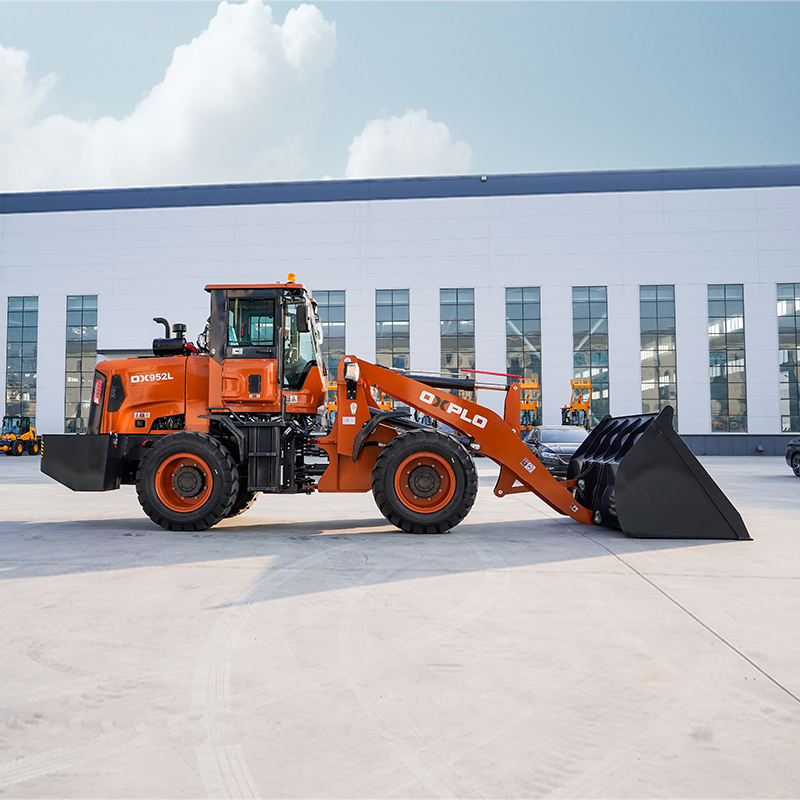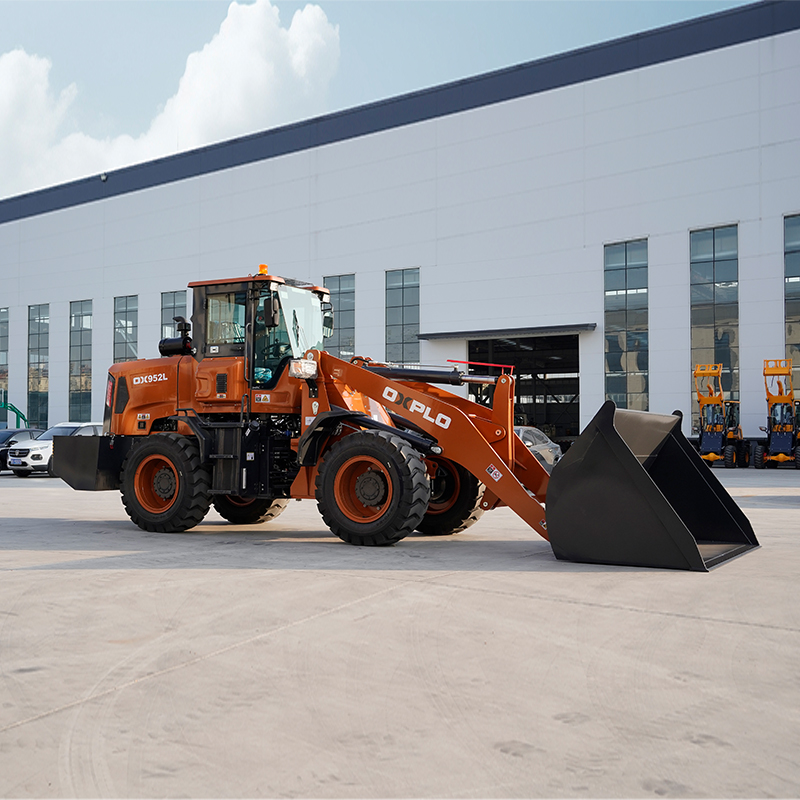Six bad operating habits that damage wheel loaders
2024-02-06
1. Step on the accelerator: Step on the accelerator will cause the loader to suddenly accelerate, producing a strong impact force. This sudden impact force can cause excessive stress on the loader's mechanical parts and systems, increasing the risk of wear and damage to the parts. Sudden acceleration may cause the operator to lose control of the loader. Loaders may have difficulty controlling direction and speed, increasing the risk of colliding with obstacles, losing control or tipping over. Slamming the throttle also causes the tires to experience too much force in a short period of time, which can lead to the risk of tire damage or blowout. This will affect the stability and operational safety of the loader. Sudden throttle input can put excessive load on the transmission system, especially the transmission and drive shaft. Over time, this leads to excessive wear on the drivetrain, reducing its life and performance.

2. Direct operation of the unheated machine: when cold starting, the lubricating oil has not reached the best working temperature, and the viscosity is high. If the work is done directly, the components inside the engine can be at risk of wear and excessive wear, which can lead to reduced engine performance, damage or the need for more frequent maintenance over the long term. In addition, the fuel combustion efficiency is low when cold starting. If the operation is carried out immediately, the engine may require more fuel to reach normal operating temperature, resulting in increased fuel consumption, which increases operating costs and negatively impacts the environment. The fluid viscosity of hydraulic system and transmission system is high, and the fluidity is poor. If the operation is carried out immediately, the hydraulic pump, valve and transmission element may be subjected to excessive load, increasing the risk of failure and damage.

3. Add cold water directly during the operation: the engine of the wheel loader will produce high temperature during operation. If the cold water is directly added while the engine is still in a high temperature state, the cold water will quickly contact the hot surface, resulting in a sharp drop in temperature and thermal stress. This sudden temperature change can cause the engine parts to expand and contract unevenly, causing cracks and deformation, which can damage the engine. Putting cold water directly into a hot engine may cause liquid shock. This impact can cause vibration and damage to internal engine components, such as pumps, cooling pipes and seals. Direct replenishment of cold water may disrupt the normal operation of the cooling system. The proper ratio and concentration between the water and the coolant in the cooling system should be maintained to provide adequate cooling effect and anti-corrosion protection. If cooling water is added directly, the coolant concentration in the cooling system may be too low, reducing cooling performance and increasing the risk of engine overheating.

4.Long-term idling: Long-term idling will cause the engine to run continuously without actual load, which will increase engine wear, because at idle, the lubricating oil and coolant circulation speed is lower, unable to effectively cool and lubricate the key components of the engine. Prolonged idling can cause excessive wear on internal engine components and reduce engine life. Idling continuously consumes fuel but produces no effective power output. This results in wasted energy, increased operating costs, and a negative impact on the environment, especially during prolonged idling. The pressure of the hydraulic system will also be maintained at a low level because of long idling. This can lead to instability in the hydraulic system, such as reducing the response speed and lifting force of the hydraulic system, affecting operational efficiency and performance. When running at idle, the generator load is small and the battery may not be fully charged. Prolonged idling can cause battery power to drain, affecting the ability to start and operate other electronic devices. Prolonged idling will produce exhaust emissions, including carbon dioxide, carbon monoxide, etc. These emissions pollute the environment and negatively affect air quality and health.

5. Ignition heater: Ignition heater needs to use an open flame to heat the engine. If handled improperly or carelessly, it may cause a fire. This can cause serious damage and safety risks to the loader and the surrounding environment. When heating the engine, there may be liquid (such as fuel, coolant, etc.) around the engine, and the open flame at high temperature may cause liquid evaporation and leakage. This not only wastes resources, but can also lead to environmental pollution and fire risk. The ignition heater may also cause the engine to be at risk of overheating, if the temperature is high or the heating time is too long, the engine parts may be damaged, such as seals burned, piston deformation, etc. This reduces the life of the engine and increases the cost of servicing and replacing parts. The ignition warmer is difficult to achieve uniform heating, which may result in higher temperatures in some areas of the engine and lower temperatures in other areas. This uneven heating may cause thermal stress, uneven expansion and deformation, increasing the risk of engine failure.

6. Stop with load or stop immediately after operation: After stop with load or stop immediately after operation, the engine no longer works, but the temperature in the cooling system is still high. In this case, the circulation of the cooling system will slow down or stop, resulting in the engine temperature can not be reduced quickly. This can result in insufficient coolant to cool the engine, increasing the risk of overheating. The oil circulation in the lubrication system will be interrupted. This can result in some critical parts not getting enough lubrication, increasing the risk of wear and damage to parts. When a wheel loader is shut down with load or immediately shut down, pressure on the fuel supply system may remain, which can cause fuel to stall in the system, increasing the risk of fuel contamination and clogging. In addition, fuel may remain in the nozzle or combustion chamber, affecting the combustion effect on the next start-up.




